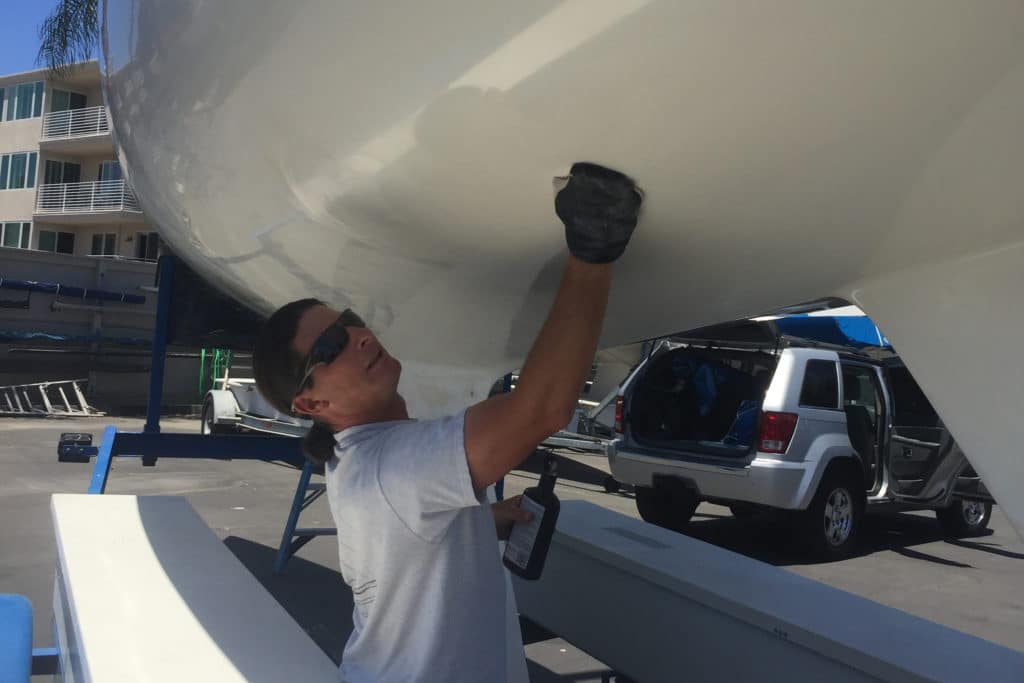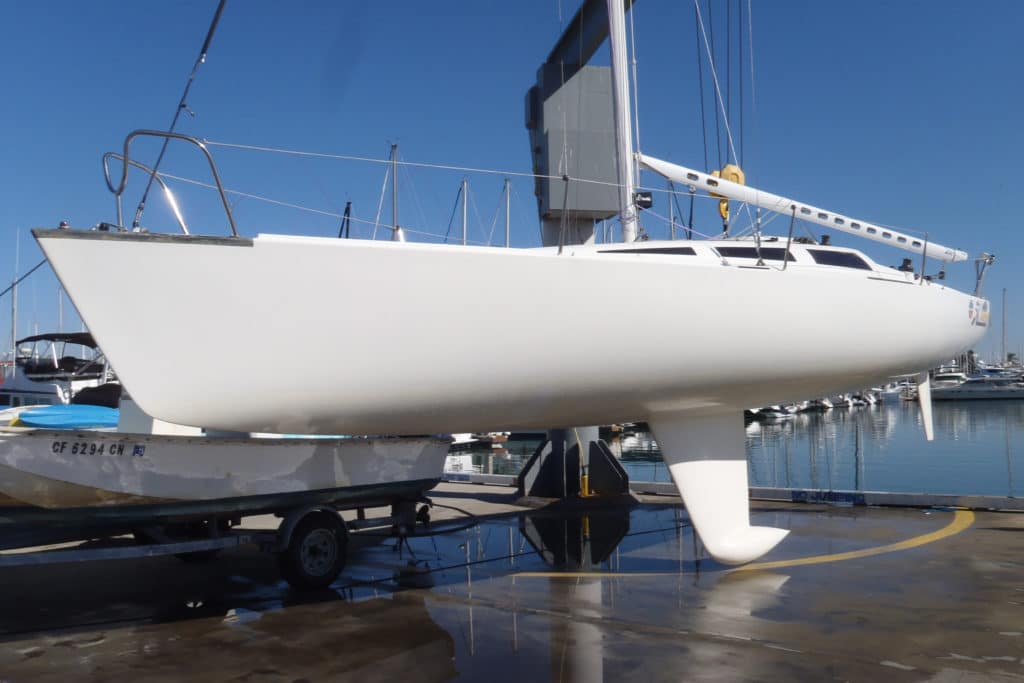
Polishing the bottoms of the small boats I sail aboard is therapeutic and gives me a sense of pride and investment in our performance. But I don’t just slop on the polish and then wipe it off. I have a system and a philosophy.
I start with some stretching because a proper polish job is a workout for the body and the soul. Next, I rinse the hull with water. My thoughts are calmed imagining the dirty molecules washing away. If the boat has travelled a long distance, I’ll use soap, even if the boat was covered. Road grime, oil, and debris get into the polish, and that will scratch the hull.
Next, while the boat is still on the trailer, I polish the area from the sheer line to one to two feet below the waterline. This process leaves the hoist open longer for others, which is often a key to making friends in the boat park. Friends are good. Friends may let you cross on port. I prefer hand polishing rather than using an electric orbital polisher. I’d like to say hand polishing makes me one with the hull, but the truth is that the orbital kills my back. As I polish, I visually break the hull into vertical sections to keep track of what I’ve done and don’t miss any areas. The size of the sections depends on the temperature. I generally will wipe the polish off as it starts to dry or “haze,” which is generally a bit sooner then the instructions specify.

Next, I hoist the boat and remove the trailer. I always try to leave the keel down on the trailer, rather than dropping it in the water and then lowering the keel later. That allows me to give the keel special attention. Again, I tackle the bottom into sections to be sure I cover it all, working from the centerline up to one or two feet above the waterline. This, combined with the topside polishing, gives two full coats around the waterline area, which helps repel water surface oils.
The final step is to get a new rag and walk around the hull several times, looking at it from different angles to ensure I’ve removed all of the dried polish. It’s also a great opportunity to simply enjoy the fruits of my labors and make sure my hair is still OK.
Rules of thumb:
1. On light sportboats with thin keels (think Melges 20s, Melges 24s, Ultimate 20s, Viper 640s), don’t polish the keel fin and sometimes not even the rudder. These are lifting surfaces, and I want the water flow to attach to the fins sooner after tacks and other turning maneuvers. However, I do polish the bulb to reduce drag.
2. On heavier boats with fat keels (think Etchells, J24s, J22s), polish everything to reduce as much drag as possible.









